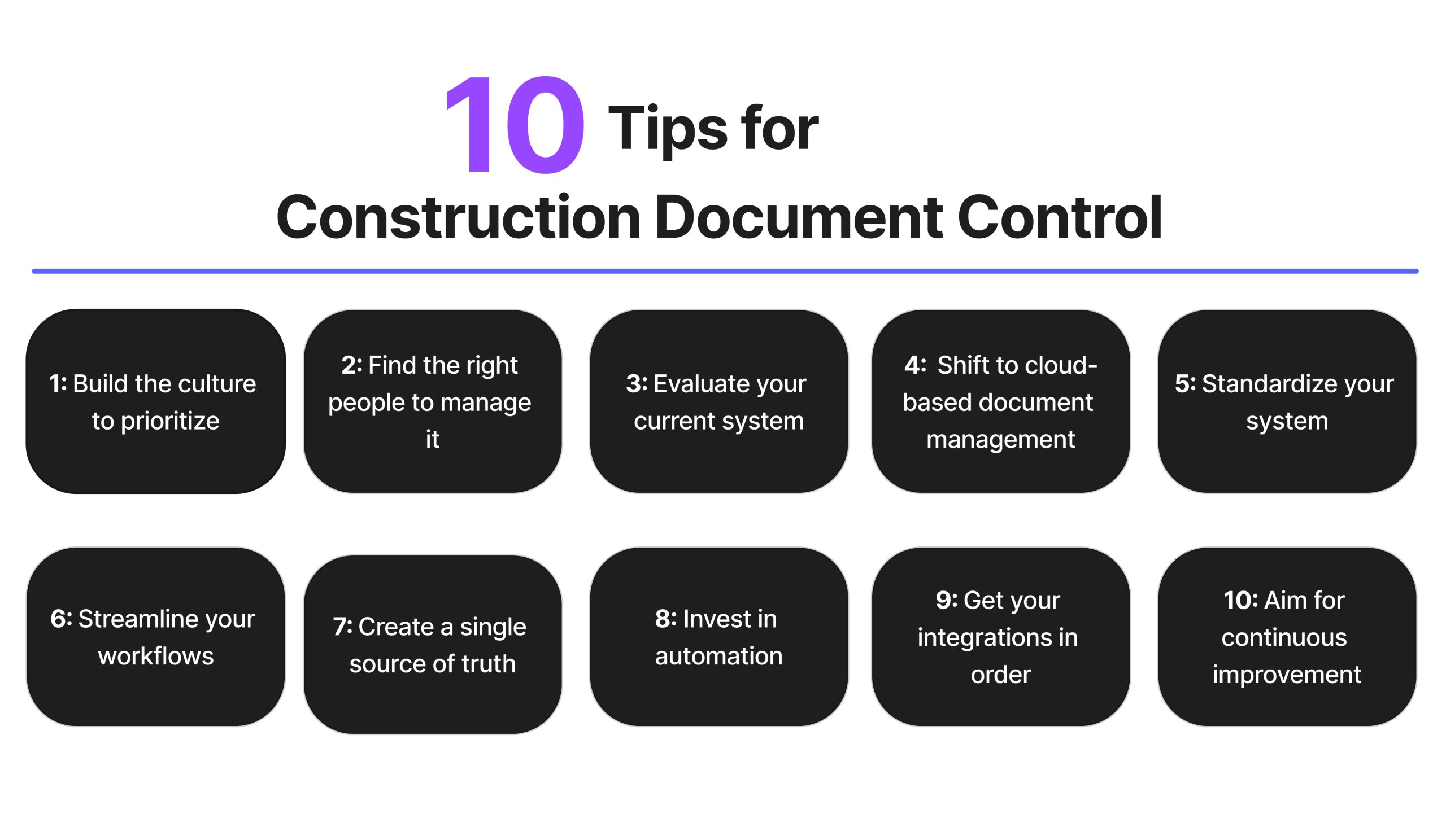Improve Your Operations: Construction Document Management Made Easy
Improve Your Operations: Construction Document Management Made Easy
Blog Article
Optimizing Job Collaboration: Engineer's Finest Practices in Building And Construction Record Administration
In the elaborate world of architectural tasks, the effective monitoring of building records stands as a foundation for success. Architects, with their careful attention to information and innovative style solutions, are charged with managing a symphony of stakeholders, timelines, and resources. However, amidst this complexity exists a sixty-four-thousand-dollar question: how can architects streamline cooperation procedures to improve task outcomes? By checking out vital approaches such as leveraging cloud-based platforms, establishing robust communication protocols, and making sure data safety, designers can raise their paper monitoring methods to new heights.
Leveraging Cloud-Based Systems
By transitioning from traditional paper-based systems to shadow remedies, architects can simplify partnership, improve file accessibility, and improve total task effectiveness. This ease of access promotes smooth interaction and coordination among task stakeholders, leading to less mistakes and hold-ups in the building and construction process.
In addition, cloud-based systems offer a secure setting for storing delicate project info, supplying file encryption, regular backups, and customer consent setups to safeguard information integrity. Designers can also gain from the scalability of cloud solutions, enabling them to readjust storage capability and capability based on job requirements. Generally, leveraging cloud-based systems empowers designers to maximize their construction file monitoring procedures, driving greater cooperation, efficiency, and success in their projects.
Carrying Out Variation Control Systems
Having established the benefits of cloud-based platforms in building and construction file monitoring, engineers can now enhance their file control processes by carrying out Variation Control Equipment. Version Control Equipment (VCS) are vital devices that track modifications in papers, making certain that group participants are always working with the current and most accurate information. By implementing VCS, architects can maintain a centralized repository where all project documents are saved, allowing seamless cooperation while decreasing the risk of errors and variation disputes.
This feature is especially valuable in building and construction projects where layout iterations and alterations are common. This openness not just enhances accountability however additionally helps in settling conflicts or disparities that may develop throughout the project lifecycle.
Developing Interaction Protocols
To make certain reliable and efficient task control, designers need to develop clear and robust interaction methods within their construction paper monitoring processes. Communication procedures specify the approaches, regularity, and channels with which group participants exchange information, updates, and feedback. One necessary aspect of establishing these procedures is establishing a centralized communication platform where all project-related discussions and paper sharing can take area. This platform can be a project administration software program, e-mail strings, or cloud-based storage space solutions. By setting guidelines on exactly how details is shared and just how team members communicate with each other, architects can streamline the circulation of information and prevent miscommunications or delays in the construction process.
Additionally, interaction methods must likewise include standards on just how to manage conflicts, change orders, and immediate problems that might develop during the great site project lifecycle. Developing a structured technique to interaction makes sure that all stakeholders are on the same web page, promotes openness, and inevitably contributes to the effective conclusion of the construction project.
Utilizing BIM Software Program for Sychronisation
BIM software plays an essential role in boosting sychronisation amongst job staff member in the building and construction industry. Structure Info Modeling (BIM) facilitates partnership by providing a central platform where engineers, engineers, professionals, and various other stakeholders can work with each other in a collaborated fashion. With BIM software program, project individuals can access and update a shared version that consists of detailed info concerning the building style, construction elements, and project routines.

Furthermore, BIM software enables real-time partnership and communication among staff member, despite their physical location. With cloud-based BIM platforms, task stakeholders can access the current project details, track changes, and make informed choices promptly. On the whole, leveraging BIM software program for coordination enhances project performance, productivity, and ultimately brings about successful job outcomes.
Ensuring Data Protection and Compliance
In the world of construction paper administration, safeguarding information honesty and guaranteeing governing compliance are vital factors to consider for architects and various other task stakeholders. Designers must carry out durable security steps to shield sensitive job details from unauthorized gain access to or breaches. Using safe and secure cloud storage services with security procedures and gain access to controls can aid mitigate risks related to data burglary or loss. Consistently updating software and systems, carrying out safety audits, check this and giving team training on data security ideal techniques are essential steps in maintaining a visit site protected atmosphere for building and construction record monitoring.

Conclusion
In verdict, architects can optimize job collaboration in building and construction file monitoring by leveraging cloud-based systems, implementing variation control systems, establishing communication methods, utilizing BIM software program for sychronisation, and ensuring data safety and security and compliance. These ideal methods aid streamline the building and construction process, boost communication amongst project stakeholders, and improve efficiency in project shipment. By following these guidelines, engineers can effectively handle building and construction documents and promote successful job outcomes.
Via BIM software application, job individuals can access and upgrade a common model that includes in-depth details about the building style, building and construction components, and project routines.
Via cloud-based BIM platforms, project stakeholders can access the most current job details, track adjustments, and make informed decisions promptly - construction document management. Overall, leveraging BIM software for sychronisation boosts job efficiency, performance, and inevitably leads to successful project results
In conclusion, architects can optimize task collaboration in building and construction document administration by leveraging cloud-based systems, applying variation control systems, developing communication methods, making use of BIM software program for sychronisation, and making sure information protection and conformity. These finest methods help improve the building and construction process, boost communication amongst project stakeholders, and improve effectiveness in job distribution.
Report this page